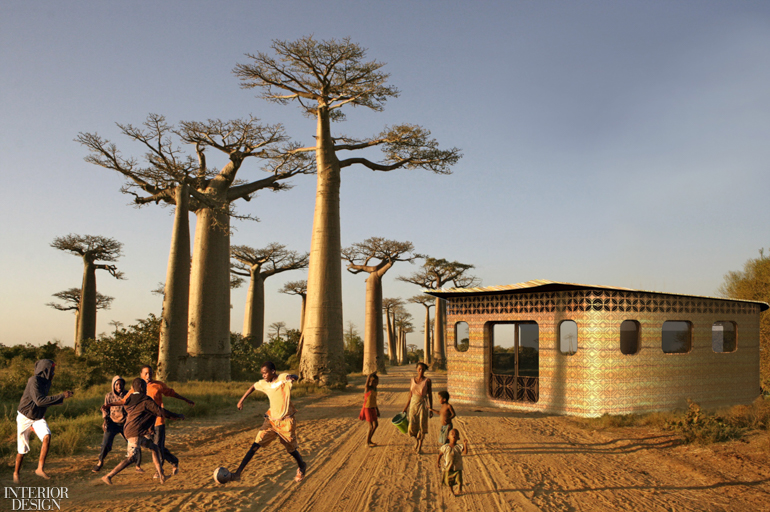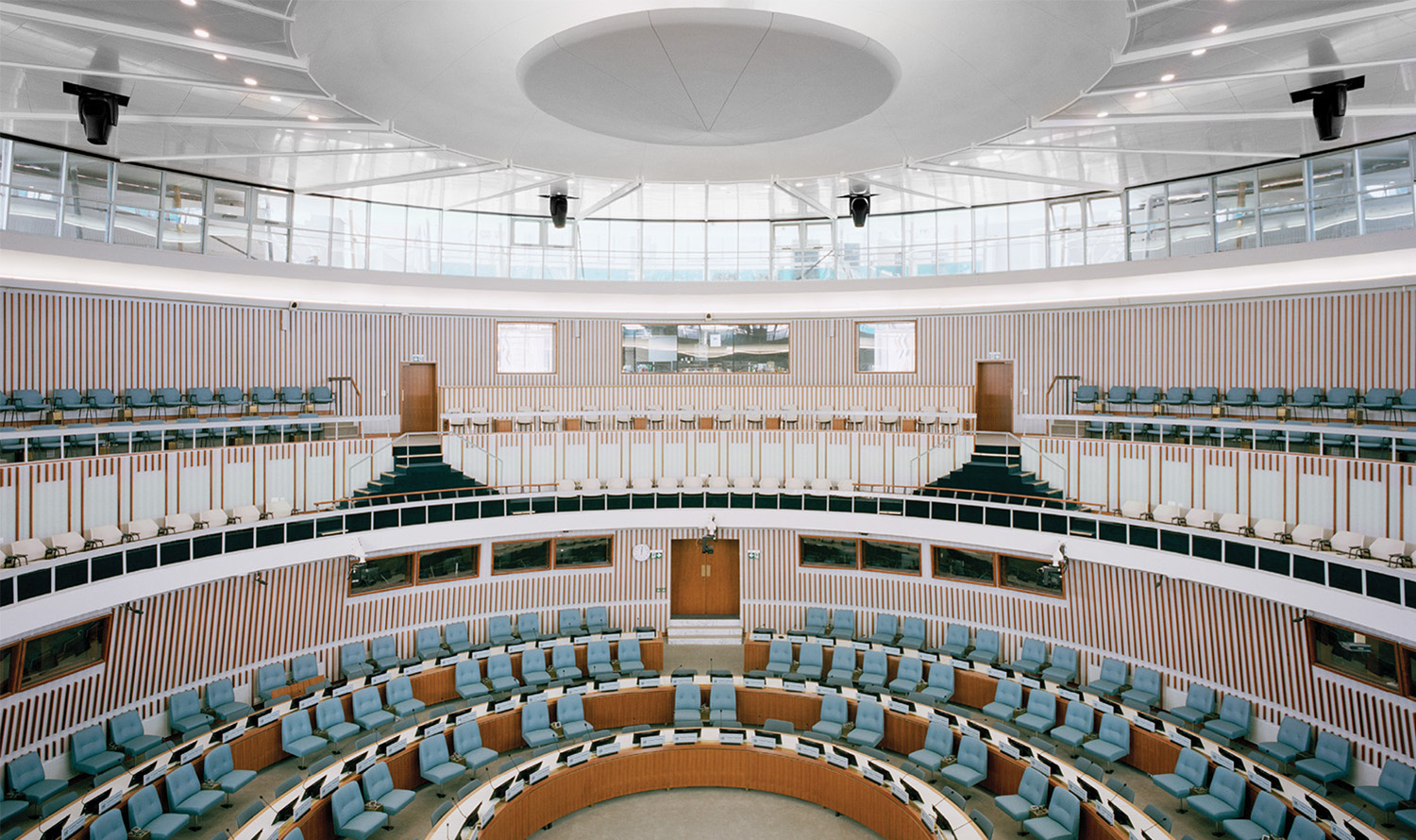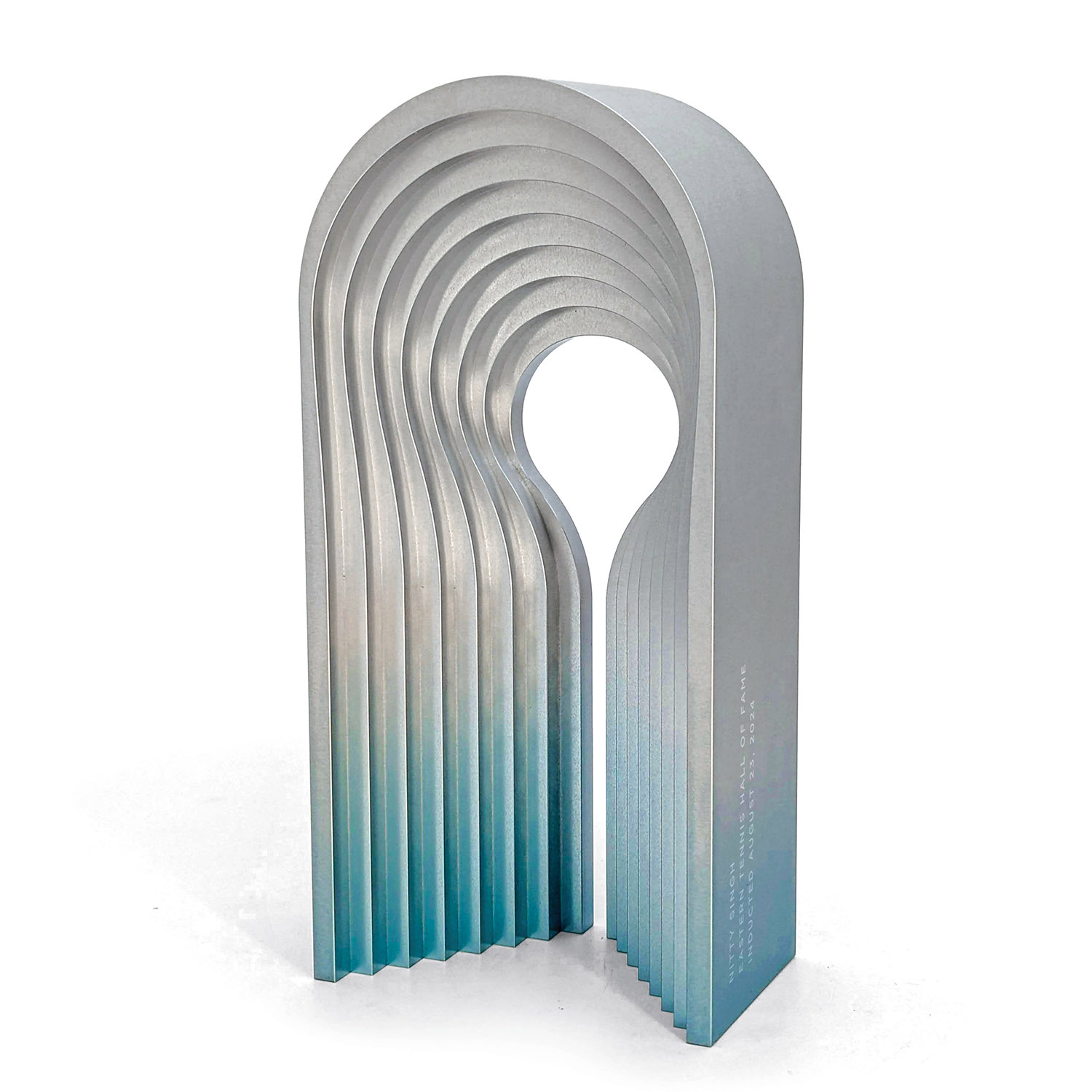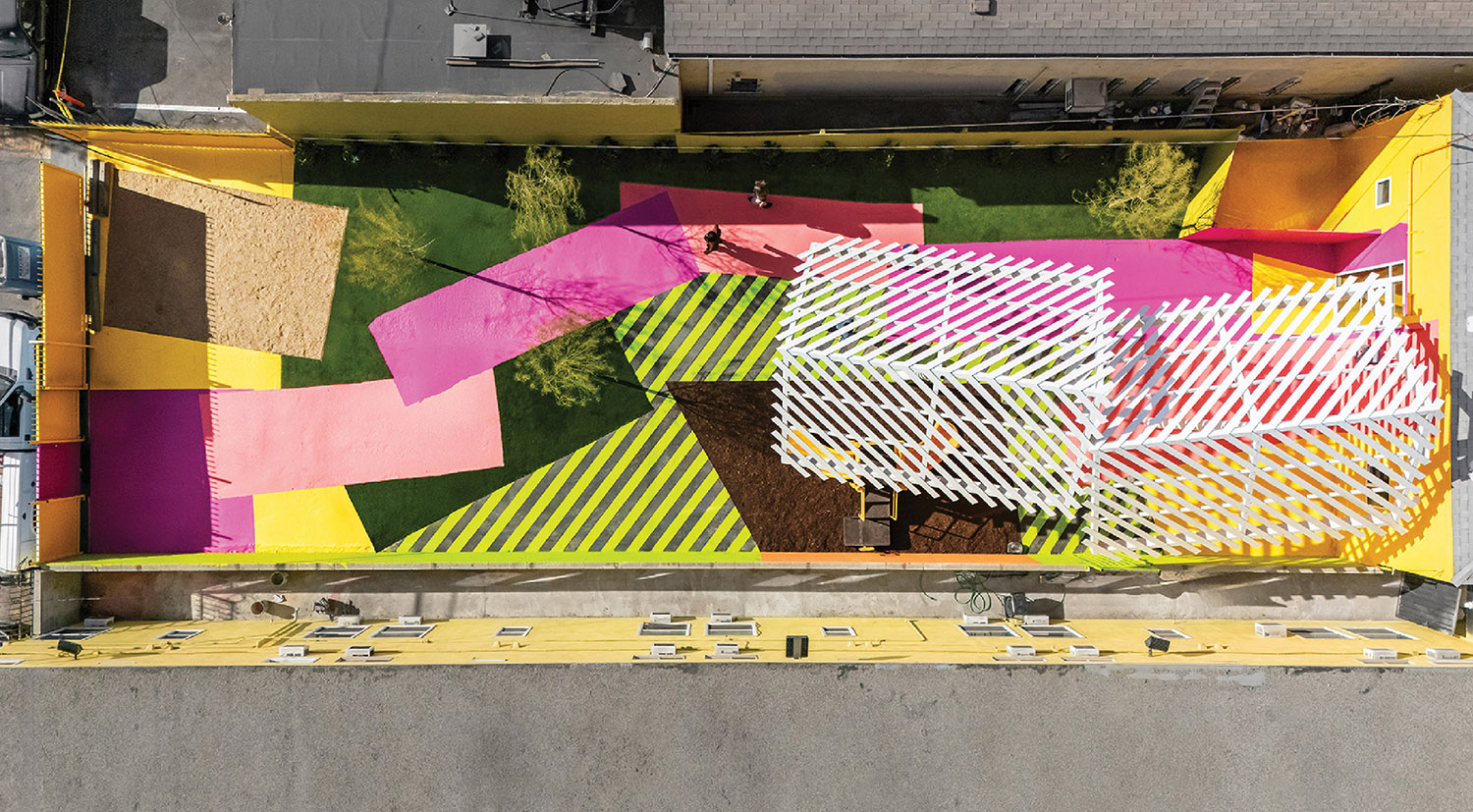Designer Amir Mortazavi Collaborates with Thinking Huts to Create 3D-Printed Schools in Madagascar

The collaboration between Maggie Grout, founder of humanitarian tech nonprofit Thinking Huts, and designer Amir Mortazavi to build 3D-printed schools in Madagascar started with a blind LinkedIn message. The brief sent to the San Francisco and Lisbon-based founder of Studio Mortazavi just over a year ago was “to create a modular beehive configuration.” Grout first envisioned the concept of self-sufficient and sustainable 3D-printed schools six years ago. “I could go on to describe all the economic and environmental factors that supported this decision,” she tells Interior Design about launching the project on the African island, “but it really comes down to the people—we seek to live out our vision of humanitarian-driven technology solutions.”
The first complex, which will accommodate needs for children’s education with rooms reserved for different purposes, such as a library or computer lab, is planned for construction this fall in collaboration with the University of Fianarantsoa in Madagascar. The typical architecture terminology is skeuomorphic for the project in which design parameters will be plugged into a Hyperion robot’s system to erect the school in a week with 65% recycled cement. “We started the process by understanding the machine,” says Mortazavi about his first 3D-printed construction commission. In addition to eliminating the usual challenge to create molding for curved walls, this new technology has also provided the architect a series of restrictions. “As opposed to a blank slate, I had limitations to work through, most importantly blending the nature of the printer with elements from the region’s vernacular architecture,” he adds.
The patterns covering the classroom walls are adopted from motifs on local textiles, while the flat roof concept echoes a common building attribute across the region. Local craftsmen will be tapped to make the wooden desks and other furniture. Thinking Huts is currently in the process of raising funds to purchase the printer and fostering community partnerships with Zimbabwe, India, Pakistan and South Africa for expansion. To donate, go here.






